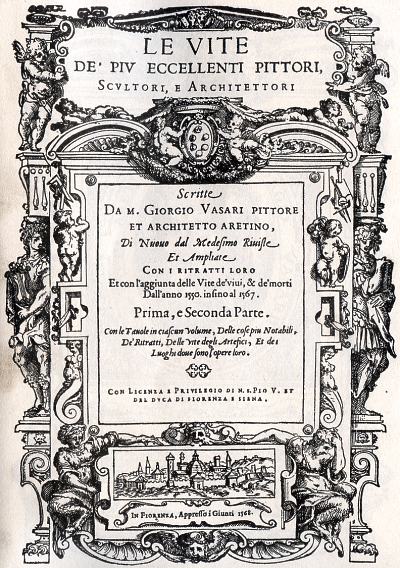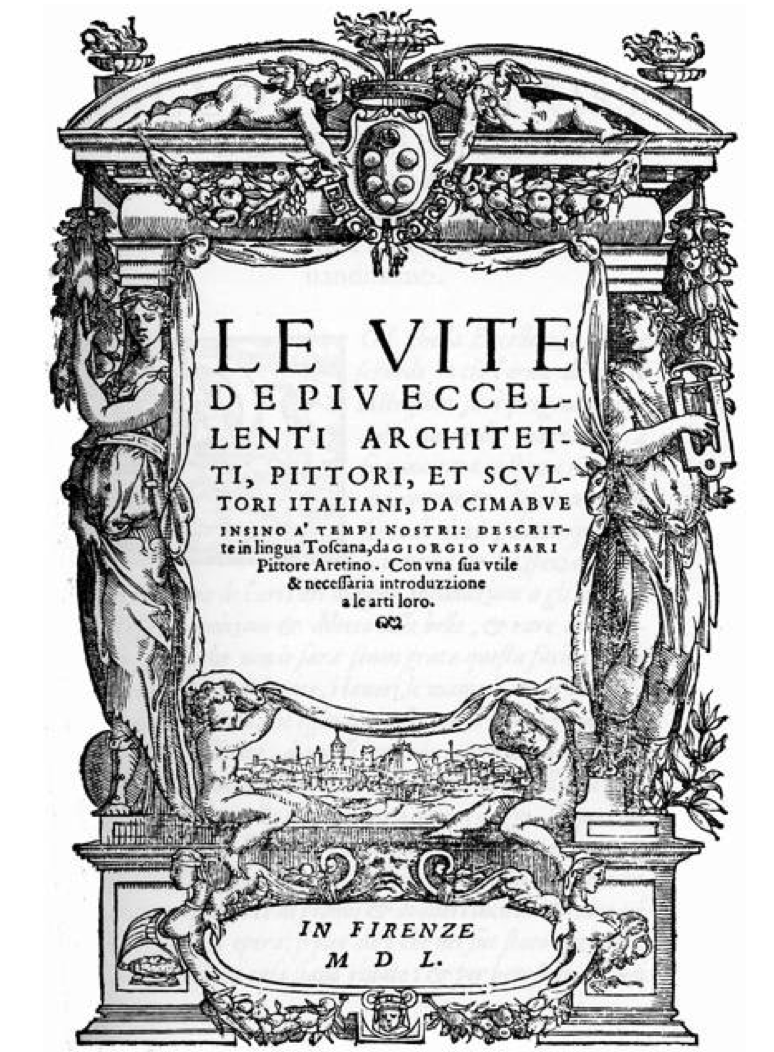Transcription
“Mossi dalla fama di quest’opre dell’Orgagna, che furono molto lodate, coloro che in quel tempo governavano Pisa, lo fecero condurre a lavorare nel Campo Santo di quella Città, un pezzo d’una facciata, secondo, che prima Giotto e Buffalmacco fatto havevano. Onde messovi mano, in quella dipinse Andrea un Giudizio Universale con alcune fantasie à suo capriccio, nella facciata di verso il Duomo, allato alla Passione di Christo fatta da Buffalmacco, dove nel canto facendo la prima storia, figurò in essa tutti i gradi de’ Signori Temporali, involti nei piaceri di questo mondo; ponendogli a sedere sopra un prato fiorito, e sotto l’ombra di molti melaranci, che facendo amenissimo bosco, hanno sopra i rami alcuni amori, che volando a torno, e sopra molte giovani Donne, ritratte tutte, secondo, che si vede, dal Naturale di femmine nobili, e signore di que’ tempi le quali per la lunghezza del tempo non si riconoscono, fanno sembiante di saettare i cuori di quelle alle quali sono giovani uomini appresso, e signori che stanno a udir’ suoni, e canti, e a vedere amorosi balli di garzoni, e Donne che godano con dolcezza i loro amori.
Fra’ quali signori ritrasse l’Orgagna Castruccio, signor di Lucca, e giovane di bellissimo aspetto, con un Cappuccio azzurro avvolto intorno al capo e con uno sparviere in pugno, e appresso lui altri signori di quell’età, che non si sa chi sieno. Insomma fece con molta diligenza in questa prima parte, per quanto capiva il luogo, e richiedeva l’arte, tutti i diletti del mondo graziosissimamente. Dall’altra parte nella medesima storia, figurò sopra un’alto monte la vita di coloro che, tirati dal pentimento, de’ peccati, e dal disiderio d’esser salvi, sono fuggiti dal mondo à quel Monte tutto pieno di Santi Romiti, che servono al Signore diverse cose operando con vivacissimi affetti. Alcuni leggendo et orando si mostrano tutti intenti alla contemplativa, e altri lavorando per guadagnare il vivere, nell’attiva variamente si essercitano.
Vi si vede fra gl’altri un Romito, che mugne una Capra, il quale non può essere più pronto né più vivo in figura di quello che gli è. E poi da basso San Machario, che mostra a que’ tre Re, che cavalcando con loro donne e brigata vanno a caccia, la miseria humana in tre Re, che morti e non del tutto consumati, giaceno in una sepoltura, con attenzione guardata dai Re vivi, in diverse, e belle attitudini piene d’amirazione, e pare quasi che considerino con pietà di se stessi. d’havere in breve a divenire tali. In un di questi Re a cavallo ritrasse Andrea Uguccione della Faggiuola Aretino, in una figura che si tura con una mano il naso, per non sentire il puzzo de’ Re morti e corrotti. Nel mezzo di questa storia è la morte che volando per Aria, vestita di nero, fa segno d’havere con la sua falce levato la vita a molti, che sono per terra d’ogni stato e condizione, poveri, ricchi, storpiati, ben disposti, giovani, vecchi, maschi, femmine, e insomma d’ogni età, e sesso buon numero. E perché sapeva che ai Pisani, piaceva l’invenzione di Buffalmacco, che fece parlare le figure di Bruno in San Paulo a Ripa d’Arno, facendo loro uscire di bocca alcune lettere, empié l’Orgagna tutta quella sua opera di cotali scritti de’ quali la maggior parte, essendo consumati dal tempo, non s’intendono. A certi vecchi dunque storpiati fa dire:
Da che prosperitade ci ha lasciati / O morte, medicina d’ogni pena / Deh, vieni a darne homai l’ultima cena.
Con altre parole, che non s’intendono, e versi cosi all’antica composti, secondo, che ho ritratto, dall’Orgagna medesimo, che attese alla poesia, e a fare qualche sonetto. Sono intorno a que’ corpi morti alcuni Diavoli che cavano loro di bocca l’anime, e le portano a certe bocche piene di fuoco, che sono sopra la sommità d’un altissimo monte; di contro a questi sono Angeli, che similmente a altri di que’ morti, che vengono a essere de’ buoni, cavano l’anime di bocca, e le portano volando in Paradiso. Et in questa storia è una scritta grande, tenuta da due Angeli, dove sono queste parole:
Ischermo di savere e di ricchezza / Di nobiltate ancora, e di prodezza / vale niente ai colpi di Costei,
con alcune altre parole, che malamente s’intendono. Di sotto poi, nell’ornamento di questa storia, sono Nove Angeli, che tengono in alcune accomodate scritte, Motti volgari e latini, posti in quel luogo da basso, perché in alto guastavano la storia, e il non gli porre nell’opera, pareva mal fatto all’Auttore, che gli reputava bellissimi, e forse erano ai gusti di quell’età. Da noi si lasciano la maggior parte per non fastidire altrui con simili cose impertinenti e poco dilettevoli, senza che essendo il più di cotali brevi cancellati, il rimanente viene a restare poco meno che imperfetto. Facendo dopo queste cose l’Orgagna il giudizio, collocò Gesù Christo in alto sopra le nuvole in mezzo ai dodici suoi Apostoli, giudicare i vivi, e i morti, mostrando con bell’arte, e molto vivamente, da un lato i dolorosi affetti de’ Dannati, che piangendo, sono da furiosi Demonij strascinati all’inferno. E dall’altro la letizia, e il Giubilo de’ buoni, che da una squadra d’Angeli guidati da Michele Arcangelo, sono, come eletti, tutti festosi tirati alla parte destra de’ beati. Et è un peccato veramente, che per mancamento di scrittori, in tanta moltitudine d’huomini togati, Cavallieri, e altri signori, che vi sono effigiati e ritratti dal Naturale, come si vede di nessuno, o di pochissimi, si sappiano i nomi, ò chi furono. Ben si dice, che un papa, che vi si vede, è Innocentio Quarto, amico di Manfredi.
Dopo quest’opera et alcune sculture di marmo fatte con suo molto onore nella Madonna, ch’è in su la coscia del ponte vecchio, lasciando Bernardo suo fratello a lavorare in Campo Santo, da per se un’Inferno, secondo, che, è descritto da Dante, che fu poi l’anno 1530 guasto e racconcio dal Sollazzino, pittore de’ tempi nostri, se ne tornò Andrea a Fiorenza, dove nel mezzo della chiesa di Santa Croce a man destra, in una grandissima facciata, dipinse a fresco le medesime cose che dipinse nel Campo Santo di Pisa, in tre quadri simili, eccetto però la storia dove San Macario mostra a’ tre Re la miseria humana; e la vita de’ romiti, che servono a Dio in su quel monte.” (1:182-184)


 A founding stone of modern art history, the Vite written by the Tuscan painter and architect Giorgio Vasari appeared in first edition in 1550. As has been emphasized in recent scholarship, Vasari’s collection of artists’ biographies followed a clear historiographic structure that interpreted the process of art’s rebirth since the late thirteenth century as a sequence of three phases leading from a time of beginning (Cimabue and Giotto), to a time of progress (Masaccio, Brunelleschi and Donatello) to the time of perfection (Raphael and Michelangelo). According to this model, the building of the Camposanto and the murals along its galleries belonged to the first period (the exception being the fifteenth century works by Benozzo Gozzoli). Yet as becomes clear from the following excerpts, the Pisan cemetery has no particular role in Vasari’s master narrative: Vasari basically treats the information about the building and the frescoes in the same laconic manner found in the older artistic literature that he used as his source (Antonio Billi and the Anonimo Magliabechiano). In fact, the names of the artists and the subjects of the paintings are almost identical with those that appear in the Codice Magliabechiano. Thus, when Vasari composed the first version of the Vite he had not developed any particular interest in the Pisan cemetery. Introducing Giovanni Pisano as a pupil of the much younger sculptor Andrea Pisano, he gives a very confusing account of the chronology of Pisan sculpture and architecture. In stark contrast to this rather negligent treatment, the detailed description of Benozzo Gozzoli’s murals in the northern gallery prove that the author of the Viteknew the monument very well, and that he was willing to provide much more nuanced characterizations of artworks and the achievements of their makers when he deemed it fitting. In the eyes of Vasari, Gozzoli represented an advanced stage of art’s rebirth in the fifteenth century which was characterized by the mastery of perspective and the copiousness of beautiful detail. Also, as a pupil of Lorenzo Ghiberti and Fra Angelico, the painter belonged to the Florence-centered core narrative of the Vite. Interestingly, the passage on Gozzoli is the only text on the Pisan cemetery to survive almost unaltered in the second edition of the Vite from 1568. /DG
A founding stone of modern art history, the Vite written by the Tuscan painter and architect Giorgio Vasari appeared in first edition in 1550. As has been emphasized in recent scholarship, Vasari’s collection of artists’ biographies followed a clear historiographic structure that interpreted the process of art’s rebirth since the late thirteenth century as a sequence of three phases leading from a time of beginning (Cimabue and Giotto), to a time of progress (Masaccio, Brunelleschi and Donatello) to the time of perfection (Raphael and Michelangelo). According to this model, the building of the Camposanto and the murals along its galleries belonged to the first period (the exception being the fifteenth century works by Benozzo Gozzoli). Yet as becomes clear from the following excerpts, the Pisan cemetery has no particular role in Vasari’s master narrative: Vasari basically treats the information about the building and the frescoes in the same laconic manner found in the older artistic literature that he used as his source (Antonio Billi and the Anonimo Magliabechiano). In fact, the names of the artists and the subjects of the paintings are almost identical with those that appear in the Codice Magliabechiano. Thus, when Vasari composed the first version of the Vite he had not developed any particular interest in the Pisan cemetery. Introducing Giovanni Pisano as a pupil of the much younger sculptor Andrea Pisano, he gives a very confusing account of the chronology of Pisan sculpture and architecture. In stark contrast to this rather negligent treatment, the detailed description of Benozzo Gozzoli’s murals in the northern gallery prove that the author of the Viteknew the monument very well, and that he was willing to provide much more nuanced characterizations of artworks and the achievements of their makers when he deemed it fitting. In the eyes of Vasari, Gozzoli represented an advanced stage of art’s rebirth in the fifteenth century which was characterized by the mastery of perspective and the copiousness of beautiful detail. Also, as a pupil of Lorenzo Ghiberti and Fra Angelico, the painter belonged to the Florence-centered core narrative of the Vite. Interestingly, the passage on Gozzoli is the only text on the Pisan cemetery to survive almost unaltered in the second edition of the Vite from 1568. /DG